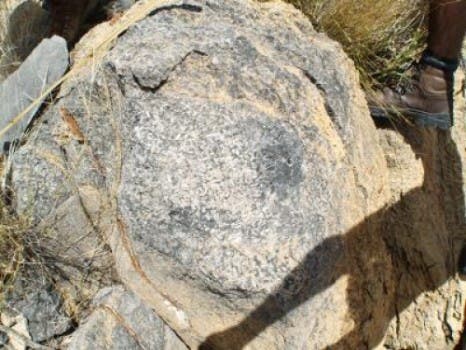
These reefs were built by Cloudina ~548 million years ago, from the Nama Group, Namibia. Credit: Fred Bowyer
Corals have been around for hundreds of millions of years, but even before them, 550 million years ago, animals were building reefs. A new study has found that Cloudina, the first animals to have hard shells built reefs too. Cloudina lived towards the end of the Ediacaran period – the last geological period of the Proterozoic Eon, immediately preceding the Cambrian Period. They covered a wide geographical range and fossils are abundant in some areas of the world. During that time, life was already starting to boom, and more and more environmental niches were starting to be covered. Creatures were diversifying, and nature was “experimenting” new things.However, finding good samples of this age is extremely difficult – even when you’re dealing with hard shell marine animals.
The study reveals the fact that Cloudina attached themselves to fixed surfaces — and to each other — by producing natural cement composed of calcium carbonate, to form rigid structures. They were the first creatures to build reefs (non-living reefs). Fossil records indicate that all creatures had a soft body until them – they were the real road openers. These findings support the idea that environmental pressures caused species to develop new features and behaviors in order to survive – developing a hard shell turned out to be a great thing, as even today, 550 million years later, there are a myriad of hard shelled animals. It is believed that this feature initially develoed in order to protect animals from predators, but a reef provided safe access to nutrient-rich waters riddled with currents. Professor Rachel Wood, Professor of Carbonate GeoScience at the University of Edinburgh, who led the study, said:
“Modern reefs are major centres of biodiversity with sophisticated ecosystems. Animals like corals build reefs to defend against predators and competitors. We have found that animals were building reefs even before the evolution of complex animal life, suggesting that there must have been selective pressures in the Precambrian Period that we have yet to understand.
Following the Ediacaran period came the Cambrian – where life really started to diversify. The rapid diversification of lifeforms in the Cambrian, known as the Cambrian explosion, produced the first representatives of all modern animal phyla.
Journal Reference: A. M. Penny, R. Wood, A. Curtis, F. Bowyer, R. Tostevin, K.- H. Hoffman. Ediacaran metazoan reefs from the Nama Group, Namibia. Science, 2014; 344 (6191): 1504 DOI: 10.1126/science.1253393









